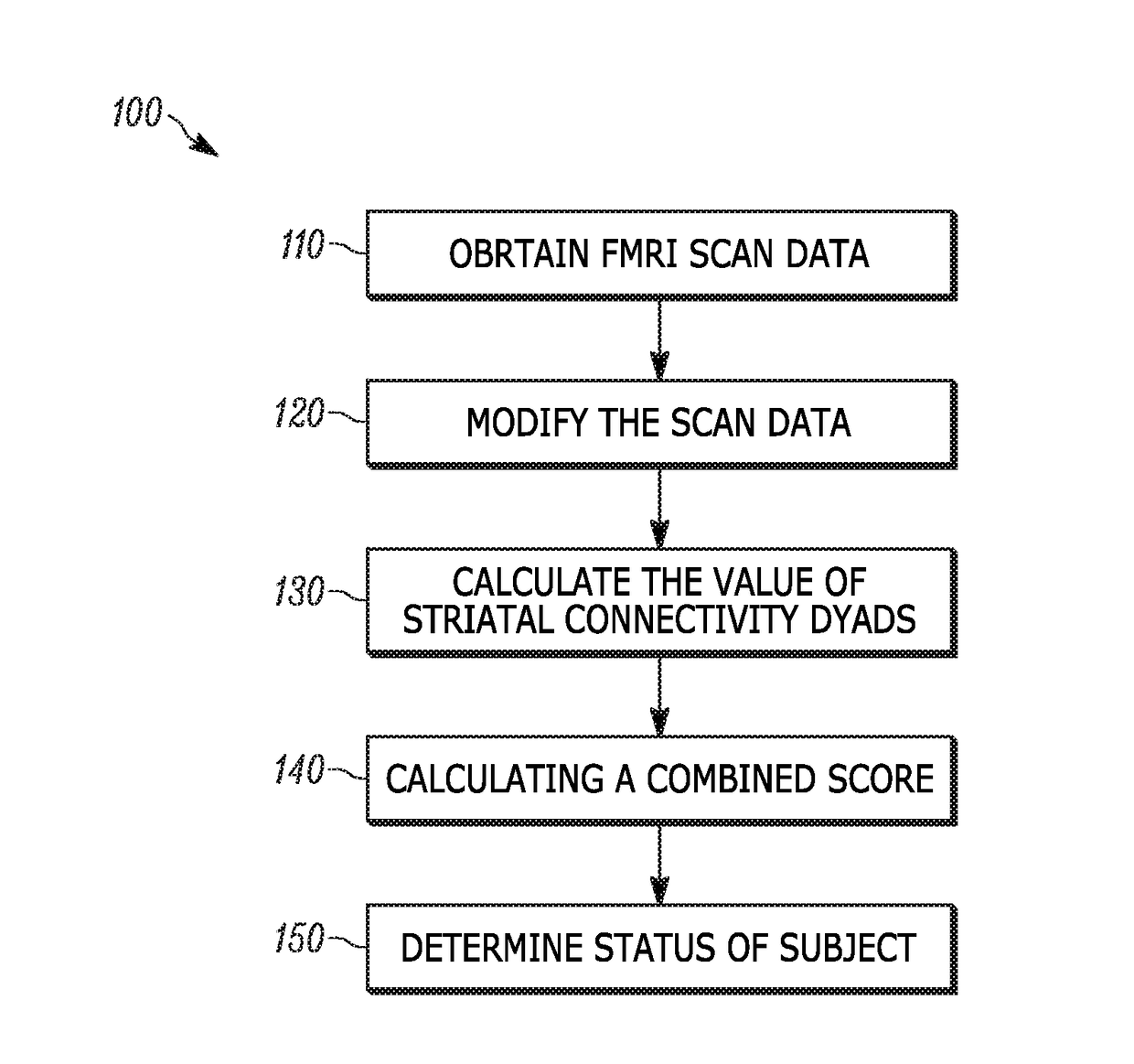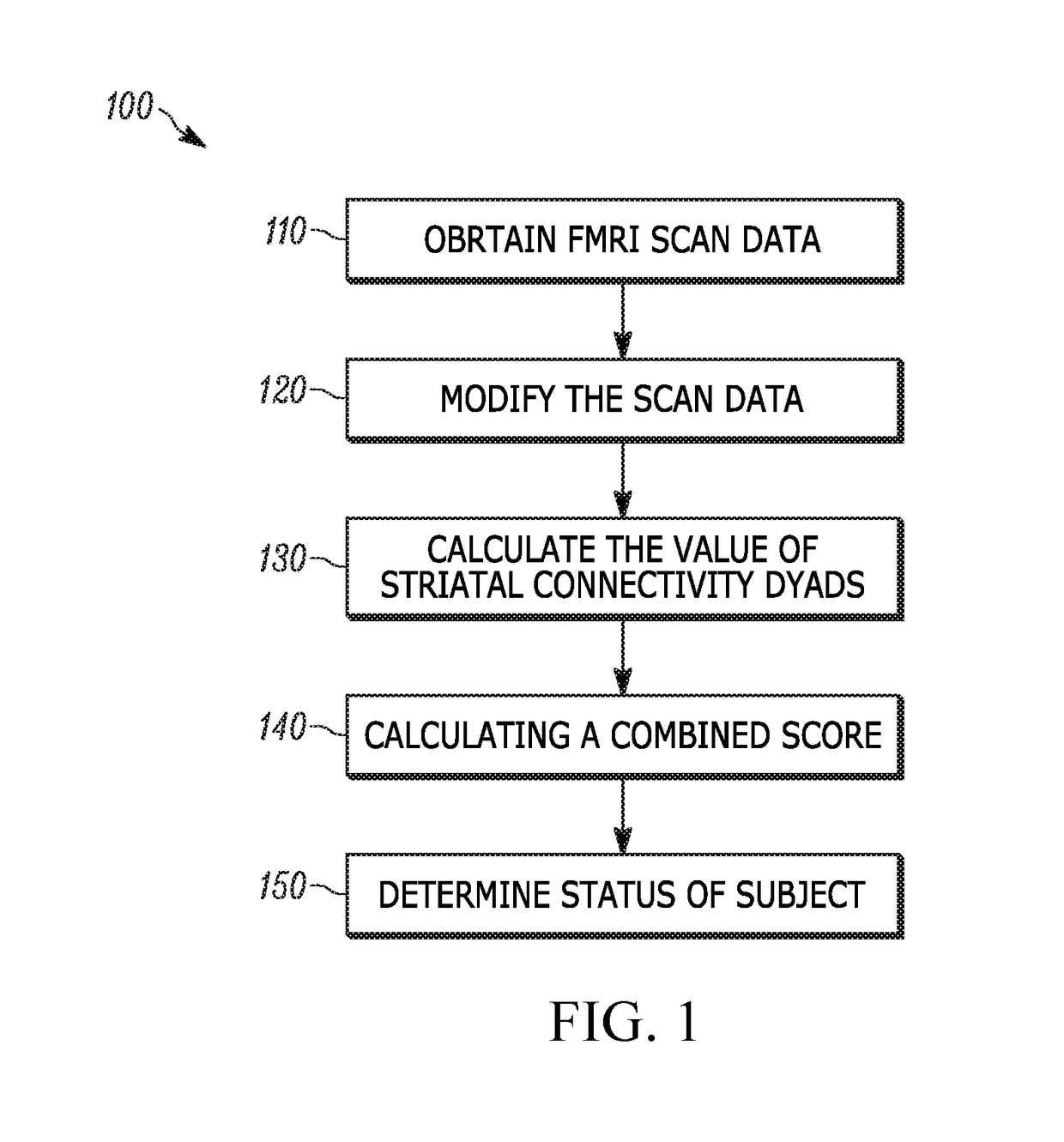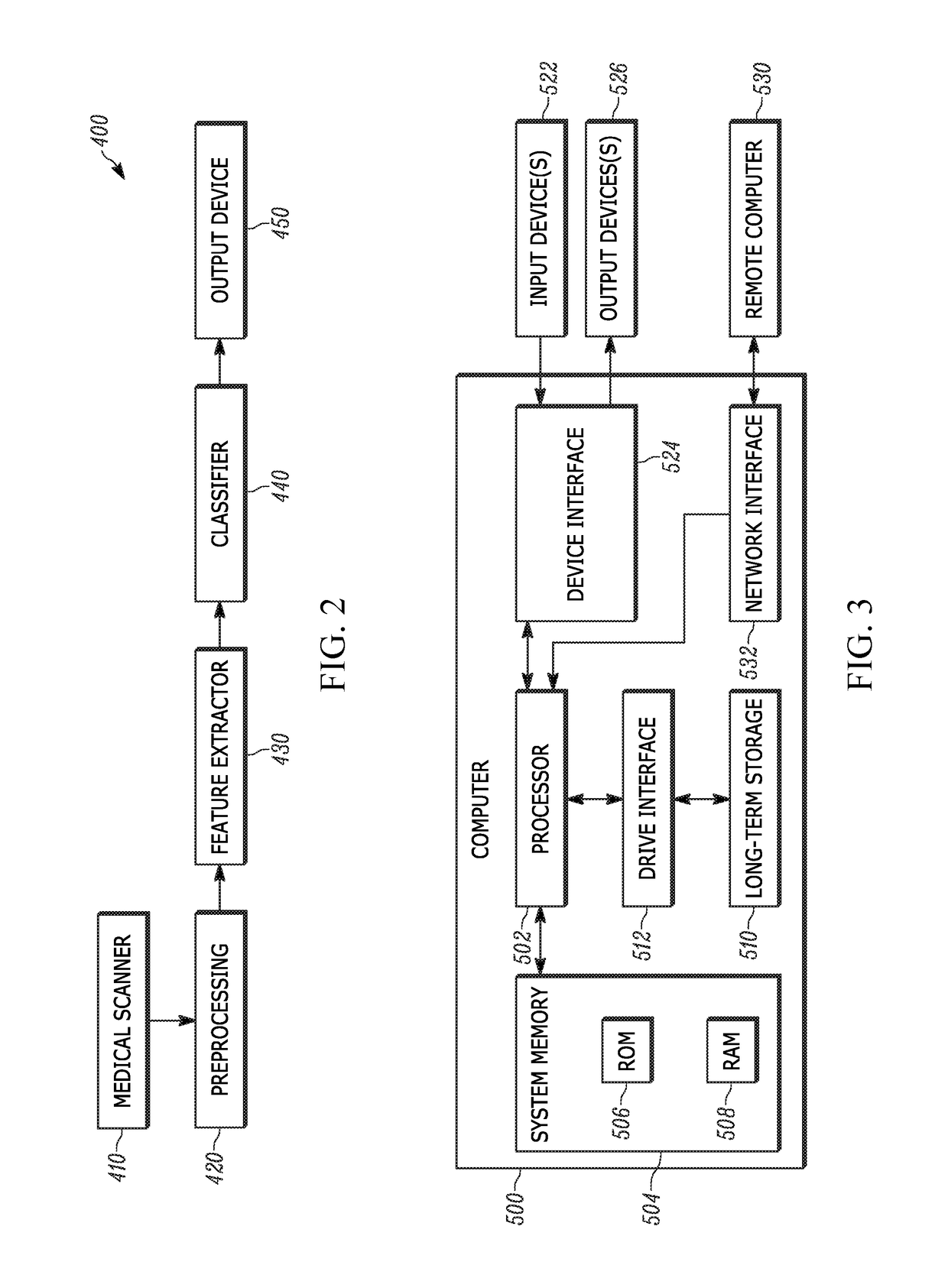Use of striatal connectivity patterns for evaluating antipsychotic agents
a technology of striatal connectivity and antipsychotic agents, applied in the direction of measurement using nmr, instruments, applications, etc., can solve the problems of poor functional outcomes, non-response to standard medications, and substantial heterogeneity in the therapeutic efficacy of antipsychotic agents
- Summary
- Abstract
- Description
- Claims
- Application Information
AI Technical Summary
Benefits of technology
Problems solved by technology
Method used
Image
Examples
example 1
Striatal Functional Connectivity Predicts Response to Antipsychotic Medications: Findings from Two Independent Cohorts
[0060]Our aim was to develop and validate a biomarker that provides a quantitative assay, with clinically useful sensitivity and specificity, predictive of treatment response to widely used first-line antipsychotic medications, based on functional connectivity of the striatum. We created our biomarker in a discovery dataset that consisted of patients with first-episode schizophrenia, and tested our results in a replication dataset comprised of chronic patients with psychotic disorders newly hospitalized for acute psychosis.
Methods
[0061]We trained and tested our biomarker in a step-wise manner. As a proof of concept, we first examined seven specific functional connections that had shown significant longitudinal changes associated with improvement in psychosis from our previous study (Table 3). Sarpal et al., JAMA Psychiatry 72(1):5-13 (2015). We tested whether a singl...
example ii
Additional Methods and Results for Striatal Functional Connectivity Analysis
Methods
Participants
[0084]All patients received physical examination and laboratory screening to rule out medical causes for their psychotic symptoms. Patients in this group received double blind treatment with either risperidone (dose range: 1-6 mg) or aripiprazole (5-30 mg) for twelve weeks. Simultaneous treatment with mood stabilizers or antidepressants was not allowed, thought patients were treated with diphenhydramine or benztropine as needed for extrapyramidal symptoms, and lorazepam for akathisia, agitation, and anxiety. Patient diagnoses were based on the Structured Clinical Interview for Axis I Diagnostic and Statistical Manual-IV Disorders (SCID). Clinical raters were blind to medication status and trained according to our standardized NIMH protocol (P50MH080173).
[0085]Exclusion criteria for all study participants included magnetic resonance imaging contraindications, neurologic conditions (Gilles d...
PUM
 Login to View More
Login to View More Abstract
Description
Claims
Application Information
 Login to View More
Login to View More - R&D
- Intellectual Property
- Life Sciences
- Materials
- Tech Scout
- Unparalleled Data Quality
- Higher Quality Content
- 60% Fewer Hallucinations
Browse by: Latest US Patents, China's latest patents, Technical Efficacy Thesaurus, Application Domain, Technology Topic, Popular Technical Reports.
© 2025 PatSnap. All rights reserved.Legal|Privacy policy|Modern Slavery Act Transparency Statement|Sitemap|About US| Contact US: help@patsnap.com



